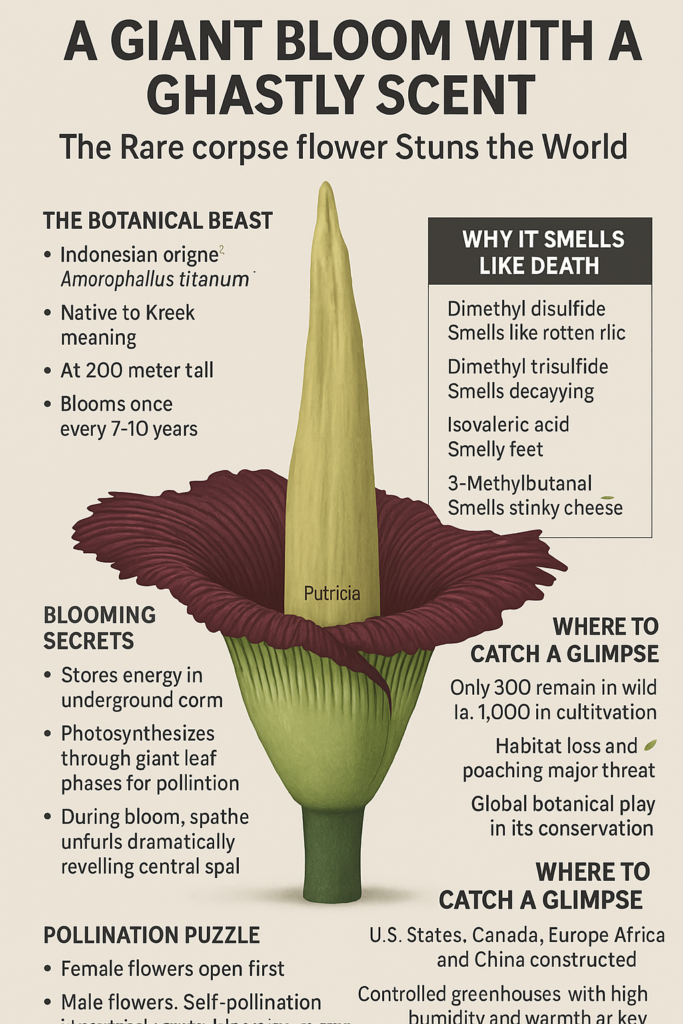087.
🌿 A Giant Bloom with a Ghastly Scent: The Rare Corpse Flower Stuns the World
The corpse flower (Amorphophallus titanum) is back in bloom — and with it, a crowd of over 20,000 people has flocked to the Royal Botanic Gardens in Sydney to witness one of the plant world’s rarest spectacles. Nicknamed Putricia, the flower has made headlines for both its titanic size and its notorious odour, reminiscent of decaying flesh.

🧬 The Botanical Beast
- Name Origin: From the Indonesian Bunga bangkai meaning “corpse flower”
- Scientific Twist: Greek translation of its name means “titanic misshaped penis”
- Size: Can grow up to 3 meters tall
- Bloom Time: Once in 7–10 years
- Lifespan of Bloom: Only 24 hours!
🌸 Blooming Secrets
The corpse flower’s bloom is not just rare — it’s strategic:
- The plant stores energy in a corm (a massive underground bulb)
- It photosynthesises through giant leaf phases to prepare for blooming
- During bloom, the spathe unfurls dramatically, revealing the central spadix
🐛 Why It Smells Like Death
To attract pollinators like carrion beetles and flies, the flower emits a cocktail of pungent chemicals:
| Compound | Smells Like |
|---|---|
| Dimethyl disulfide | Rotten garlic |
| Dimethyl trisulfide | Decaying meat |
| Isovaleric acid | Smelly feet |
| 3-Methylbutanal | Stinky cheese |
| Methyl thioacetate | Sulfur |
| Methanethiol | Boiled cabbage |
It’s nature’s most repulsive perfume — and it works!
🌱 Pollination Puzzle
- Female flowers open first
- Male flowers follow after
- Self-pollination is avoided — cross-blooming is rare
- Manual pollination in botanical gardens aids reproduction
🚨 A Bloom in Peril
The corpse flower is now critically endangered:
- Only ~300 remain in the wild
- About 1,000 exist in cultivation
- Habitat loss and poaching are major threats
- Global botanical gardens play a vital role in its conservation
🌍 Where to Catch a Glimpse
Botanic gardens in:
- United States (New York Botanical Garden, Chicago)
- Brazil, Canada, Europe, Africa, China — all have hosted blooms
- Controlled greenhouses with high humidity and warmth are key















